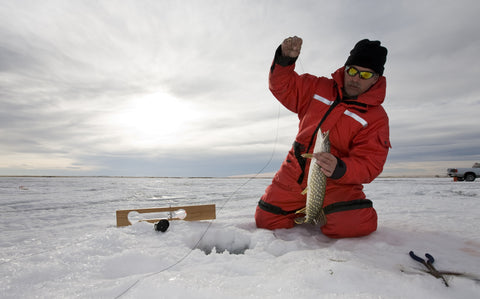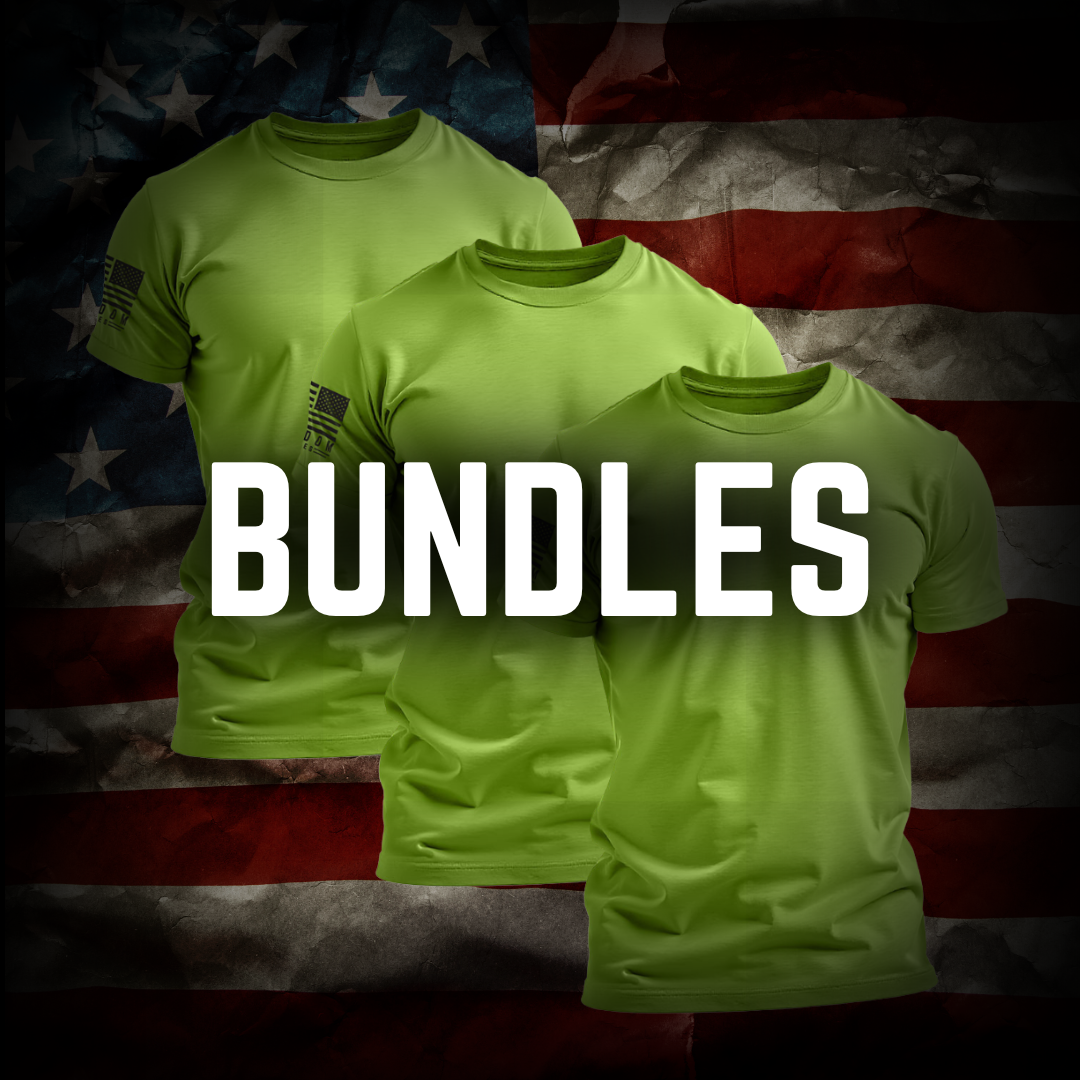Many people enjoy ice fishing as a relaxing but challenging pastime during the winter, and you can too. If you’re ready to bundle up and take to the ice to catch some bluegills, perch, or lake trout, here are some ice fishing tips to help you get started.
Know the Rules
Each state has its own rules and regulations for ice fishing. If you already obtained a fishing license that you use on open water, then you can use the same license for ice fishing.
Most states have regulations regarding where to ice fish, how many lines you can use, and what to do with the fish. Certain types of fish may have regulations, so you must be able to identify the fish you catch.
In Michigan, you must follow the ice fishing regulations outlined in the most recent handbook. These include purchasing your fishing license online, limiting lines to three per person, marking ice fishing shanties with your name and address, and removing them by March 15th.
Where to Ice Fish
Deciding your ice fishing location will depend on the type of fish you want to catch, such as bluegills, northern pike, and bass, and whether you fish on a lake, reservoir, or river.
In general, the fish gather at the same spots they frequent during other seasons. For an excellent fishing spot, look for areas with underwater vegetation, rock piles, or frequented by other ice fishing enthusiasts.
When deciding on a fishing location, you also need to make sure the ice is safe. If it is 4” thick or more, then the ice can safely hold a person of average weight.
The ice should also be clear and solid. Discolored ice could be a sign of rot, which refers to ice that is structurally unsound or melting due to air, water, or contaminants trapped between the ice crystals. Rotten ice is unsafe to traverse.
If you plan on bringing large items to carry equipment, such as sleds or vehicles, check for the recommended thickness for the weight of the equipment.
Ice Fishing Equipment
While some open water fishing equipment may be used for ice fishing, it is better to find gear tailored to ice fishing. Ice anglers tend to prefer items that are better in confined spaces and less likely to break.
When ice fishing as a beginner, make a list of the following items and bring them with you when you head out onto the ice
- Fishing license: Before ice fishing, obtain a valid fishing license for your state and keep it on you at all times. If you have a digital license, bring your smartphone and a portable charger so you can show the document if needed.
- Warm clothing: Being on a frozen lake during winter will be cold. Dress in layers and use thermal clothing. Make sure to cover any exposed skin to prevent windburn, which can cause red and irritated skin.
- Auger: The main device for cutting a hole in the ice. A spud bar can also be used, but an auger is much more efficient. The two main types are hand or automatic. Hand augers are much lighter but require you to physically crank to cut, automatic augers are heavier, but you do not have to use physical effort to cut the ice.
- Ice fishing rod: You can use a regular fishing rod, but it is not ideal. Ice fishing rods are shorter than rods used on open water, measuring 18”-48” in length. They are shorter to make it easier to maneuver the rod inside of an ice shelter and more easily control the line within the hole. These rods are also more sensitive to better handle lethargic winter fish.
- Reels: As a beginner, use a small spinning reel. This reel will limit your casting distance but afford you better control of the line.
- Ice fishing line: Ice fishing line is specifically made to prevent breaking in ice-cold water. You should also use different thicknesses of lines depending on the size of the fish you plan to catch. A common type of line is monofilament which is also used in regular fishing lines but made differently for ice fishing.
-
Bait: One of the most popular baits is wax worms. These worms are a type of live bait that feed on beeswax and can be stored in a small refrigerated container with sawdust. Other bait may be available depending on your area.
For example, in Michigan wax worms, spike, wigglers, or minnows are popular.

- Ice shelter: A small, portable shelter that keeps you out of the wind while you are on the ice.
- Sled: Great for transporting all of your gear, just make sure the ice is thick enough to support its weight.
- Tip-ups: So popular they are almost considered essential. Tip-ups allow you to place your bait at a desired depth without having to watch the rod. With tip-ups, you can have multiple rods active at a time that will indicate if you have a bite.
- Ice flasher: An ice flasher monitors the depths of the water and your lure in relation to the hole you carved out.
- Underwater camera: Underwater cameras are used frequently to check and see if any fish are nearby.
- Jigging lures: These lures act as injured fish and attract other fish to go after accessible prey.
- Chair: Sitting on the ice is an option, but it is much better to have a foldable chair or even a bucket to sit on.
- Pliers: Pliers are good for removing the hooks from the mouth of the fish.
- Light sources: In the winter, it gets dark early, and most people leave before dark. If you plan on staying after the sun sets, you will need a light source. Bring a flashlight or, preferably, a headlamp so you can see what you are doing.
- Towels: Because of the cold temperatures, it is important to stay dry. After you catch a fish and either stow it or release it, dry off to prevent frostbite.
- Line cutters: A device used to cut lines if they need to be shortened or if they become tangled. The Freedom Fatigues Survival Dog Tag with Gut Hook’s inner body doubles as a handheld cutting tool.
- Ice Scoop: An ice scoop is a device for removing the slush and ice from your hole after cutting it.
Heading Out to Ice Fish
Once you know the rules around ice fishing in your area and assemble all your gear, you are ready to start ice fishing.
Go to your predetermined location on a lake or reservoir and use your ice auger to check the thickness of the ice. If the ice is thick enough, proceed to your fishing spot. Cut another hole with the auger and then set up your equipment depending on what you brought.
If you have underwater cameras or an ice flasher use them to check for fish, if not, set up your ice fishing rods and reels with bait. Set up any other equipment, including an ice shelter, chair, tip-ups, and GPS.
Once everything is prepared you are ready to catch fish. Get comfortable and wait for the fish to start biting.
Support Local Wildlife While Ice Fishing
Catching fish through the ice is a pastime shared by many cold-weather fans. As you become familiar with the sport, you will learn exciting techniques like reel combos, how to set the hook and the best placement for the rod tip.
You can help support wildlife organizations that protect the environment, such Howl For Wildlife, by shopping at veteran-owned clothing companies like Freedom Fatigues. How For Wildlife provides a platform for people who want to protect wildlife and fisheries.
View the Howl For Wildlife collection at Freedom Fatigues to find stylish, patriotic clothing that also supports a worthwhile environmental cause.




